 A table set for breakfast in one of the rooms at Casa San Blas Boutique Hotel in Cusco. Photo provided by Casa San Blas Boutique Hotel.
A table set for breakfast in one of the rooms at Casa San Blas Boutique Hotel in Cusco. Photo provided by Casa San Blas Boutique Hotel.Being a Peru travel expert means being right here in Peru, staying in every hotel, embarking on every tour, tasting every meal, and journeying on every trek we recommend. This first-hand evaluation is exactly what we do here at Peru for Less to ensure a top-notch experience. For this, we are elated to share one of our most adored hotels in Cusco: Casa San Blas Boutique:
Casa San Blas Boutique was the first boutique hotel in Cusco, and is a true treasure in this legendary city. Tucked in the historic San Blas area, the hotel is only a 6 minute walk to the main plaza . The charming 3 star retreat reflects not only the art of the Andes, but the wisdom that comes with it.
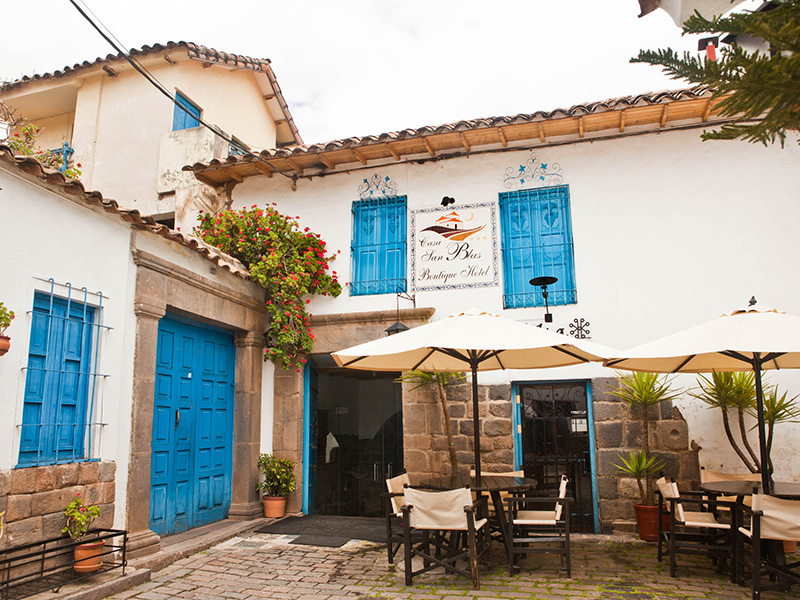
Each of the 18 rooms are super comfortable, and come complete with a different teaching from the Quechua tradition. For example, one room beholds the theme of the Chaska, or star, which teaches the value of self-esteem.
Cusco Tours:
All rooms are equipped with private bathrooms with hot water, cozy beds, rustic handmade furniture, blackout curtains, and reverse osmosis purified water free of charge.
The suites, located on the upper level, have a lounge area, kitchenette, and direct access to the terrace with twinkling city vistas. In addition, the senior suite extends a jacuzzi and postcard views from its private balcony.
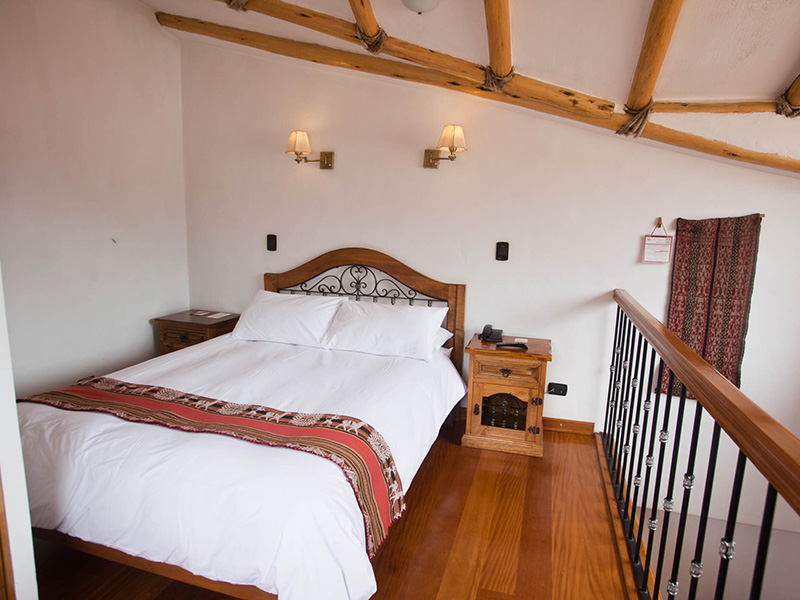
On your free time, you can relax in the endearing stone-lined courtyard or schedule a relaxing massage. If you are hungry, you can head over to the onsite Tika Bistro for a nurturing meal and handcrafted beverage. Also, every morning Tika boasts an energizing breakfast spread of fruits, cheeses, cold meats, eggs, bread, and beverages.
The cherry on top of this hotel is the warm and compassionate staff. They are always there for you, and happy to connect and assist in any way possible.
Stroll the cobbled streets of Cusco in eastward strides from the central plaza and you’ll arrive at Casa San Blas , a charming boutique hotel. The restored 18th century colonial building that houses the hotel creates a welcoming ambiance for its guests who enjoy highly customized service. Yet, it’s the beautiful, handmade textiles on display and splashes of Andean design throughout the hotel that bring the local culture to life and make a stay at Casa San Blas truly unique. Since its 2003 opening, Casa San Blas has been committed to showcasing the artwork of Peruvian textiles and educating its guests about the traditional weaving practices of the Andean people .
The cultural significance of Andean textiles for the boutique hotel dates back to family traditions.
Delia Vidal de Milla was a pioneer in helping weaving become recognized as an artform by the universities of Cusco. She wrote her master’s thesis on the art of indigenous textiles in 1937 and her ongoing research took her to local communities to learn about the symbolism woven into each textile. In later years, Delia played an instrumental role in establishing textile artistry as a school subject in Cusco and helped commercialized the tradition when tourism hit the city in the 1950s.
Delia’s continued efforts to preserve, support, and teach others about weaving traditions are echoed at the Casa San Blas Boutique today where her son, Carlos Milla, is the general manager.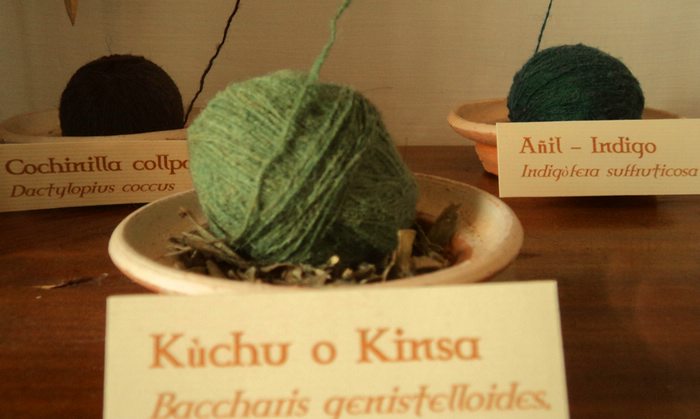 Natural materials used to dye the textiles are on display at the hotel.
Photo by Rachael Taylor/Peru For Less
Natural materials used to dye the textiles are on display at the hotel.
Photo by Rachael Taylor/Peru For Less
The hotel has a textile interpretation center that allows guests to understand the weaving process. A series of photographs, drawings, and informative layouts walk a spectator through the weaving process – from yarn to textile – and details the cultural symbolism associated with their creation. Written explanations that accompany the displays are inscribed in English and Spanish.
“You learn as a guest of our hotel,” Carlos said. “You learn that these people respect nature, that they practice a millennium old tradition, and that they are retrieving the ancient ways that were getting lost.”
The rooms at Casa San Blas are decorated to mirror a specific theme woven into each textile design. These different themes are represented as symbols that honor important aspects of daily life and nature in the Andean region, including water, various animals, corn, etc.
Within Cusco, Casa San Blas works with the Center of Traditional Textiles, a nonprofit dedicated to the preservation and revival of Peruvian textiles. The organization oversees a range of activities devoted to renewing the rich heritage of textile designs and complex weaving techniques in collaboration with small villages throughout the Sacred Valley.
“We work very closely with the Centro de Textiles,” Carlos said. “They do very, very good work with several communities, mainly from the area of Chinchero. But they’re spreading and getting weavers from Lares, a town from the other side of the Sacred Valley.”
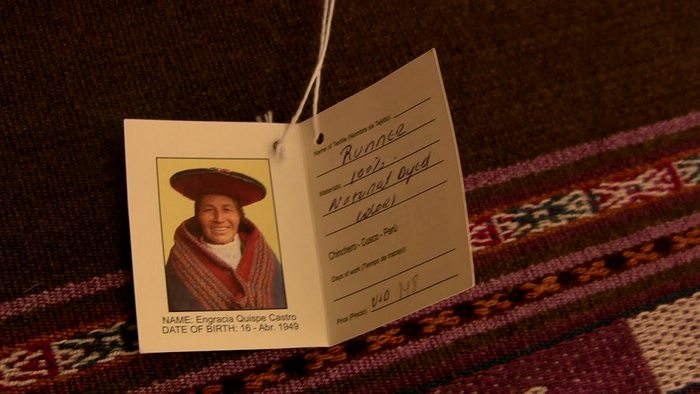 Quality Andean textiles are for sale at Casa San Blas Boutique. Photo by Rachael Taylor/Peru For Less
Quality Andean textiles are for sale at Casa San Blas Boutique. Photo by Rachael Taylor/Peru For Less
Guests of Casa San Blas and other travelers can visit the Center of Traditional Textiles’ museum shop located on 603 Avenida el Sol in Cusco. Quality textiles are sold here and sometimes it’s possible to observe weaving demonstrations. Some of the textiles at Casa San Blas are also for sale, but those displayed in each of the rooms cannot be purchased.
Weaving in the Andes of Peru is a tradition that dates back over 2,000 years.
Under Peru’s textile umbrella, there are thousands of techniques, styles, and layouts associated with Peruvian weaving. Interestingly, each village practices its own unique patterns and traditions.
A visit to Casa San Blas sheds light on the artful creation of Andean textiles.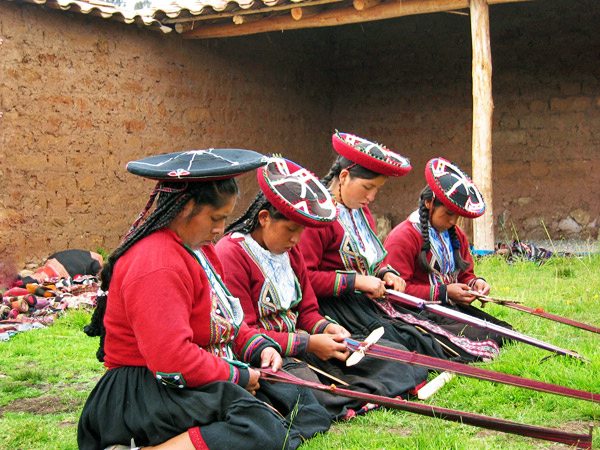 Female weavers in action.
Photo from Casa San Blas Boutique website
Female weavers in action.
Photo from Casa San Blas Boutique website
The symbols woven into the textiles are significant. All 18 rooms at Casa San Blas are named after a traditional textile symbol.
 Symbolism is woven into the small details.
Photo from Casa San Blas Boutique website
Symbolism is woven into the small details.
Photo from Casa San Blas Boutique website
Wisdom cards are a contemporary and artistic way to interpret the symbols woven into the textiles. Such cards are on display and for sale in the hotel lobby.
“Our wisdom cards have icons, designs, and meditations that can be used like a game, like a tarot card. The one you pick up puts you in context with some issue of your personal life…whatever you pick up is symbolic and hooks up immediately with the present moment,” said Carlos.
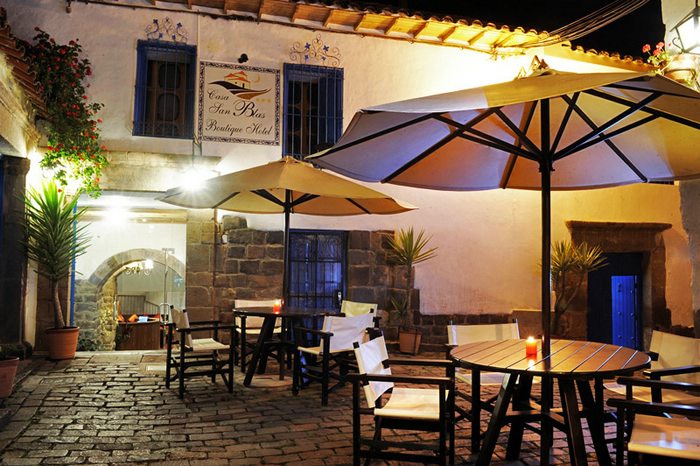 Welcome to Peruvian hospitality.
Photo provided by Casa San Blas Boutique
Welcome to Peruvian hospitality.
Photo provided by Casa San Blas Boutique
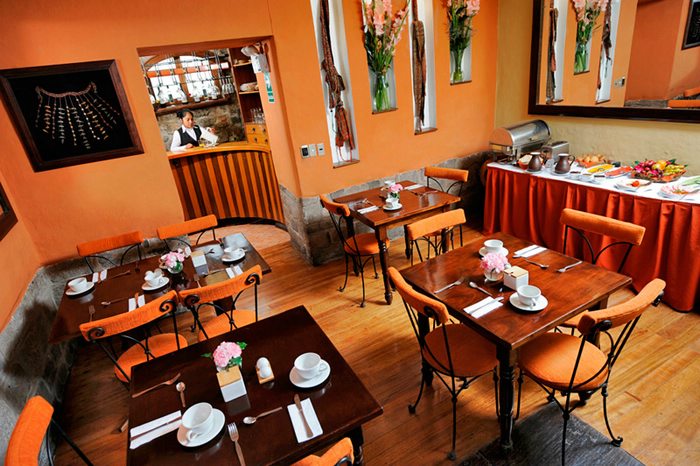 Eat in the inviting, orange glow of the hotel’s dining area.
Photo provided by Casa San Blas Boutique
Eat in the inviting, orange glow of the hotel’s dining area.
Photo provided by Casa San Blas Boutique
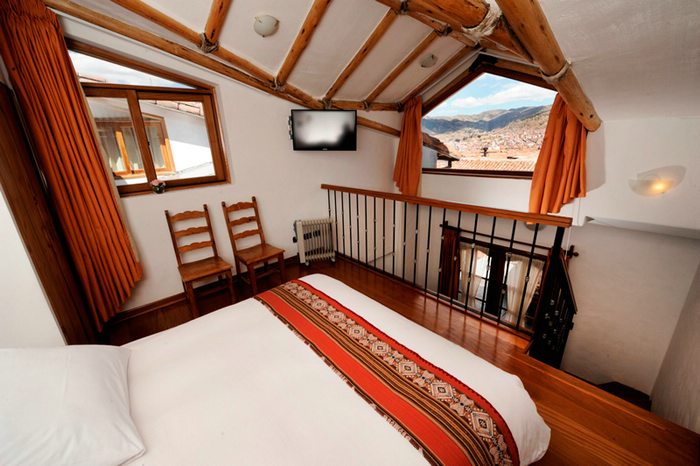 Sleep in Andean design.
Photo provided by Casa San Blas Boutique
Sleep in Andean design.
Photo provided by Casa San Blas Boutique
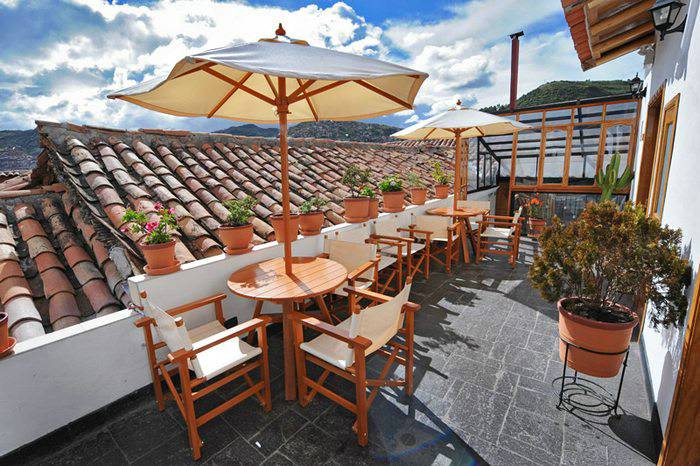 Enjoy Cusco-infused rooftop culture.
Photo provided by Casa San Blas Boutique
Enjoy Cusco-infused rooftop culture.
Photo provided by Casa San Blas Boutique
“We use the public areas to transmit knowledge and the rooms to transmit some wisdom,” Carlos Milla.
The art of weaving has been passed down through the generations. These traditions exist today, but in a different environment impacted by influences outside of Andean families and communities. To ensure the cultural significance of Peruvian textiles isn’t lost, educating a wider audience about these special traditions is important. Trail the history of textiles in Cusco at Casa San Blas for a unique look at the Andean region’s heritage.
Our provider management team reviews hundreds of testimonials and Casa San Blas Boutique hotel comes up time and time again as a favorite in Cusco. It is the kind of place that you keep in your heart for years, even a lifetime. Not only do our clients love it, we do too! And visit every chance we get. Contact us to start planning your dream trip to Peru now!



Email: [email protected]
Sign up to receive our newsletter for great articles, stunning photos, and special deals.